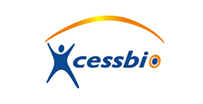
| Chemical Name: | N-[(3,5-Difluorophenyl)acetyl]-L-alanyl-2-phenylglycine-1,1-dimethylethyl ester |
| Molecular Weight: | 432.46 |
| Formula: | C23H26F2N2O4 |
| Purity: | ≥98% |
| CAS#: | 208255-80-5 |
| Solubility: | DMSO up to 100 mM |
| Storage: | Powder:4oC 1 yearDMSO: 4oC3 month -20oC 1 year |
DAPT is a widely used γ-secretase inhibitor and serves as an inhibitor of Notch, a γ-secretase substrate. It can also cause a reduction in Aβ40 and Aβ42 levels in human primary neuronal cells (IC50 ~115 nM for total Aβ and ~200 nM for Aβ42) and in brain extracts, as well as in vivo. Since the Notch pathway is involved in development of many cell types, DAPT is used to modulate Notch activity in ESC/iPSC or adult stem cell differentiation studies.
How to Use:
- In vitro: DAPT is used at 10 µM final concentration in cell culture.
- In vivo: DAPT was orally dosed to mice at 100-200 mg/kg once per day or intraperitoneally dosed to mice at 10-100 mg/kg once per day.
Reference:
- 1. Lanz TA, et al. The gamma-secretase inhibitor N-[N-(3,5-difluorophenacetyl)-L-alanyl]-S-phenylglycine t-butyl ester reduces A beta levels in vivo in plasma and cerebrospinal fluid in young (plaque-free) and aged (plaque-bearing) Tg2576 mice.(2003) J Pharmacol Exp Ther. 305(3):864-71.
- 2. Dovey HF, et al. Functional gamma-secretase inhibitors reduce beta-amyloid peptide levels in brain. (2001) J Neurochem. 76(1):173-81.
- 3. Androutsellis-Theotokis A, et al. Notch signalling regulates stem cell numbers in vitro and in vivo. (2006) Nature 442(7104):823-6.
- 4. Crawford, T. and Roelink, H. The Notch Response inhibitor DAPT enhances neuronal differentiation in embryonic stem cell-derived embryoid bodies independently of Sonic Hedgehog Signaling. (2007) Dev Dyn. 236(3):886-92
- Product Specification:
 DAPT_spec.pdf
DAPT_spec.pdf- Product MSDS:
 DAPT_MSDS.pdf
DAPT_MSDS.pdf
Products are for research use only. Not for human use.
ebiomall.com






>
>
>
>
>
>
>
>
>
>
>
>
我用conA和LPS分别刺激脾细胞,当然细胞均有明显的增殖,可是如果把这两种有丝分裂原同时用来刺激细胞时,细胞的增殖明显受到了抑制,比起单独采用ConA或者LPS都低很多。conA和LPS分别刺激T细胞和B细胞的增殖,两者同时加入时,作用应该更强,为什么反而大幅减弱呢?
此外,我研究的这种成分单独刺激皮细胞时,细胞也有一定程度的增殖,但是如果这种物质与conA联合使用时,比起单独用conA时,细胞的增殖程度明显降低了一些,这又是什么原因呢?难道可以解释为我研究的这种物质有类似于LPS的作用——刺激B细胞增殖?
如果真的是这样来解释,哪位大侠能把第一个现象(conA和LPS共同作用产生拮抗)的机理帮我解释一下呢?
当抗体结合到示踪剂上时,340nm的激发光激发铕标分子,导致能量转移到Alexa Fluor 647染料上,结果产生665nm的发射光。荧光的强度与样品中的cAMP含量成反比。
本试剂盒用于检测在GPCR激动剂刺激下活细胞或者细胞膜制备品产生的cAMP。对于偶联Gαs的受体,激动剂刺激导致665nm的荧光强度降低,而拮抗剂则可以逆转这一效应;对于偶联Gαi的受体,在激动剂刺激的同时用forskolin刺激cAMP产生,那么激动剂则抑制forskolin诱导的cAMP的生成,因此对照只给forskolin的细胞组可以通过665nm荧光强度的增加反应激动剂的效应。
该试剂盒的灵敏度很高,室温下反应在20h内是稳定的。本试剂盒适用于在384孔板中进行24μl的微量分析。
2.保存条件
避光2~4℃保存,过期时间见装。
3.盒内试剂
cAMP标准品:1管,1ml。(50μM)
生物素标记的cAMP(b-cAMP):1管,25μl。
铕标的抗生物素蛋白链菌素:1管,25μl。
荧光标记的cAMP抗体:1管,40μl。
检测缓冲液:1瓶,25ml。
4.需要自配的其他溶液
l Hank’s balanced salt solution (HBSS): NaCl 8.0g、CaCl2 0.14g、KCl 0.4g、 KH2PO4 0.06g、Na2HPO4?7H2O0.09g、MgCl2.6H2O0.10 g、MgSO4.7H2O0.10 g、NaHCO30.35g、葡萄糖1.0g,加H2O至 1000ml (用7.5%NaHCO调节PH值=7.4)
l Versene消化液(1L):EDTA 0.372 g,NaCl 8.0g,KCl 0.20 g,KH2PO40.20g,Na2HPO4 1.15 g,D-glucouse 0.2 g,pH 7.4
l HEPES缓冲液(1mol/L):取2.383gHEPES溶于10ml去离子水中。
l 7.5%BSA溶液:取0.75gBSA溶于10ml去离子水中
l 0.5M IBMX溶液:11.11mg IBMX溶于100μl DMSO中,-20℃冻存。
l 刺激缓冲液(SB):14 ml HBSS(1×)+75μlHEPES(1mol/L)+200μlBSA (7.5%)。(注:在测定细胞cAMP时,反应缓冲液中要加入IBMX 0.5mmol/L)
l 吗啡贮存液(10mM):盐酸吗啡37.585mg溶于10ml生理盐水中,0.22μm滤膜过滤除菌,4℃保存备用。
l 纳络酮母液(100mM):纳络酮4mg溶于100μl 生理盐水中,用时工作液按照1:500稀释,溶剂为含有IBMX的反应缓冲液。
抑制剂刺激细胞后,需要用PBS清洗后再做后续实验吗
我做的是细胞因子的刺激和抑制某条通路后观察是否有影响,分组为空白组,空白+抑制剂,刺激组,刺激+抑制剂,最开始用的单因素方差分析,LSD-T和SNK-Q检验,但是同学说我这里面有两个处理因素,所以不能单因素方差分析,应该直接空白和空白+抑制,空白和刺激,刺激和刺激+抑制剂进行独立样本T检验,现在脑子是混乱的,拜托园子里的大神们帮我看看,感激不尽!!









